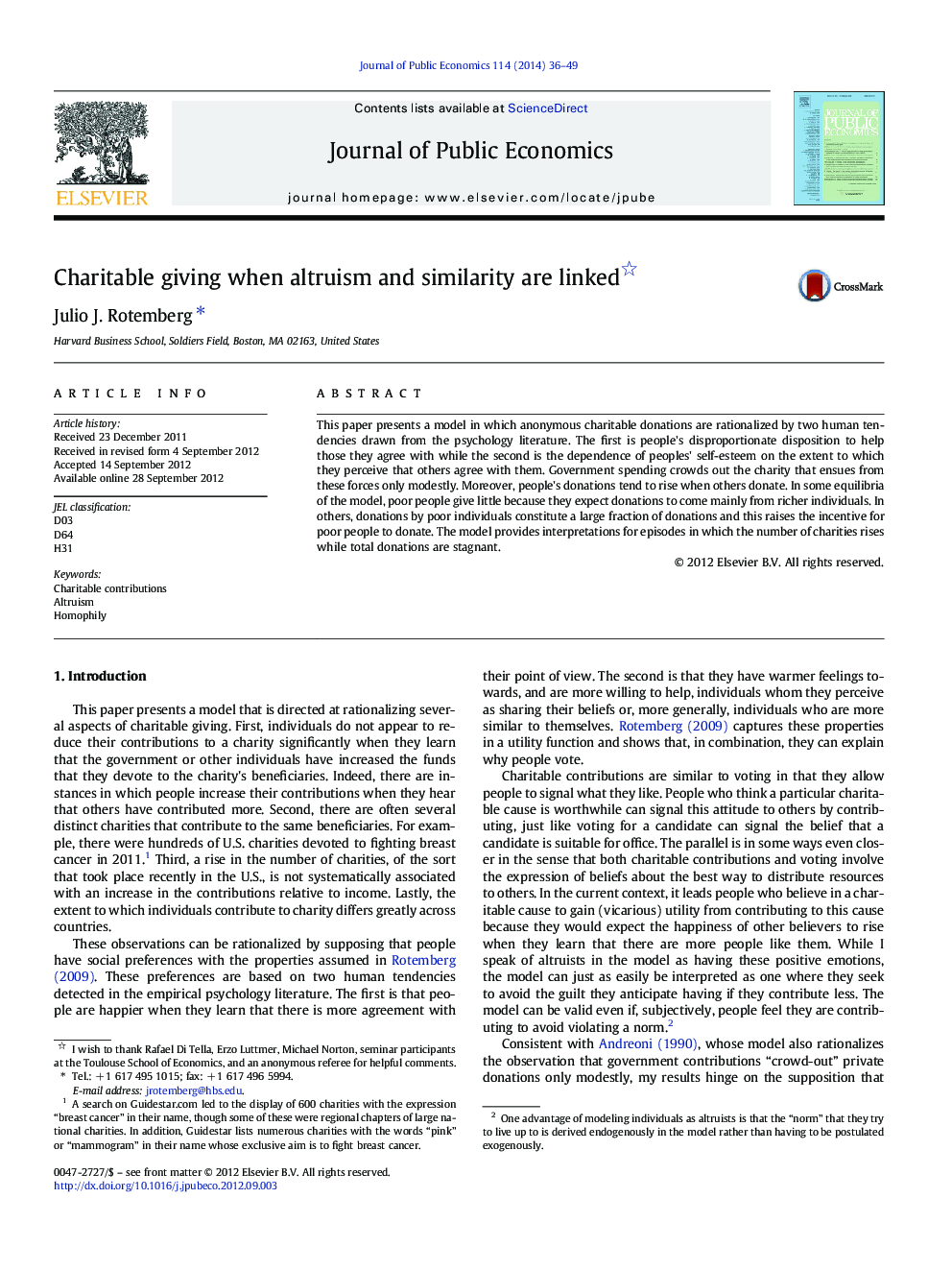| Article ID | Journal | Published Year | Pages | File Type |
|---|---|---|---|---|
| 969126 | Journal of Public Economics | 2014 | 14 Pages |
This paper presents a model in which anonymous charitable donations are rationalized by two human tendencies drawn from the psychology literature. The first is people's disproportionate disposition to help those they agree with while the second is the dependence of peoples' self-esteem on the extent to which they perceive that others agree with them. Government spending crowds out the charity that ensues from these forces only modestly. Moreover, people's donations tend to rise when others donate. In some equilibria of the model, poor people give little because they expect donations to come mainly from richer individuals. In others, donations by poor individuals constitute a large fraction of donations and this raises the incentive for poor people to donate. The model provides interpretations for episodes in which the number of charities rises while total donations are stagnant.
► Two psychological elements are added to the preferences of altruists. ► This reduces crowding out of charitable donations when others contribute more. ► Separate charities catering to the same cause arise when altruists are group-focused. ► The number of charities can grow even if total contributions are stagnant.
